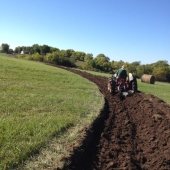
 2
2




Zone 5/6
Annual rainfall: 40 inches / 1016 mm
Kansas City area discussion going on here: https://www.facebook.com/groups/1707573296152799/
 4
4





Zone 5/6
Annual rainfall: 40 inches / 1016 mm
Kansas City area discussion going on here: https://www.facebook.com/groups/1707573296152799/




Zone 5/6
Annual rainfall: 40 inches / 1016 mm
Kansas City area discussion going on here: https://www.facebook.com/groups/1707573296152799/








 2
2




Zone 5/6
Annual rainfall: 40 inches / 1016 mm
Kansas City area discussion going on here: https://www.facebook.com/groups/1707573296152799/

 2
2













Zone 5/6
Annual rainfall: 40 inches / 1016 mm
Kansas City area discussion going on here: https://www.facebook.com/groups/1707573296152799/
 1
1




 1
1








Zone 5/6
Annual rainfall: 40 inches / 1016 mm
Kansas City area discussion going on here: https://www.facebook.com/groups/1707573296152799/
 9
9




Zone 5/6
Annual rainfall: 40 inches / 1016 mm
Kansas City area discussion going on here: https://www.facebook.com/groups/1707573296152799/




 4
4




 3
3




Subtropical desert (Köppen: BWh)
Elevation: 1090 ft Annual rainfall: 7"




"You must be the change you want to see in the world." "First they ignore you, then they laugh at you, then they fight you, then you win." --Mahatma Gandhi
"Preach the Gospel always, and if necessary, use words." --Francis of Assisi.
"Family farms work when the whole family works the farm." -- Adam Klaus
 3
3




Twisted Tree Farm and Nursery
www.twisted-tree.net




Dan Grubbs wrote:I just ordered trees and shrubs for my swales. Here's the short list. I do plan on ordering other things, including comfrey, but this is what I'm starting with tonight.
10 Pecan trees
10 Persimmon
10 Hazelnut trees
10 False Indigo
10 Elderberry
10 Pawpaw trees
I live in an awesome state with a reforrestation program of native trees and this order cost me $55.00 delivered to my door. Is that awesome, or what?
More updates to come.
Dan




Zone 5/6
Annual rainfall: 40 inches / 1016 mm
Kansas City area discussion going on here: https://www.facebook.com/groups/1707573296152799/




Dan Grubbs wrote:Thanks all for the advice and recommendations. I'm pleased so far and am anxious to get the trees planted.
Wi Tim - I have apple trees and crab apple trees on the property already, not close, however. I want to plan some pears, but I'll have to save up a few dollars to buy them. Cherry would also be a nice addition. I'll explore varieties soon.
...
Dan




Zone 5/6
Annual rainfall: 40 inches / 1016 mm
Kansas City area discussion going on here: https://www.facebook.com/groups/1707573296152799/




"The world is changed by your example, not your opinion." ~ Paulo Coelho




 4
4








Zone 5/6
Annual rainfall: 40 inches / 1016 mm
Kansas City area discussion going on here: https://www.facebook.com/groups/1707573296152799/
 1
1
















Zone 5/6
Annual rainfall: 40 inches / 1016 mm
Kansas City area discussion going on here: https://www.facebook.com/groups/1707573296152799/




Zone 5/6
Annual rainfall: 40 inches / 1016 mm
Kansas City area discussion going on here: https://www.facebook.com/groups/1707573296152799/

 2
2




Dan Grubbs wrote:Okay, so somehow I'm having a brain fart and not being able to imbed the video in my post and I only have a link there. Sorry.
"...specialization is for insects." - Lazarus Long
Universal Introduction to Permies
How Permies.com works




Zone 5/6
Annual rainfall: 40 inches / 1016 mm
Kansas City area discussion going on here: https://www.facebook.com/groups/1707573296152799/







 1
1




Dan Grubbs wrote:You're a peach, Bill.
I was going to make some reference to being a "click bitch" but then I'm not sure that everyone has watched Paul's video and might miss that humor.
"...specialization is for insects." - Lazarus Long
Universal Introduction to Permies
How Permies.com works
 1
1








Zone 5/6
Annual rainfall: 40 inches / 1016 mm
Kansas City area discussion going on here: https://www.facebook.com/groups/1707573296152799/




 2
2




"You must be the change you want to see in the world." "First they ignore you, then they laugh at you, then they fight you, then you win." --Mahatma Gandhi
"Preach the Gospel always, and if necessary, use words." --Francis of Assisi.
"Family farms work when the whole family works the farm." -- Adam Klaus




Zone 5/6
Annual rainfall: 40 inches / 1016 mm
Kansas City area discussion going on here: https://www.facebook.com/groups/1707573296152799/
 2
2





|
This tiny ad isn't wearing any underwear - WOO!
the permaculture bootcamp in winter (plus half-assed holidays)
https://permies.com/t/149839/permaculture-projects/permaculture-bootcamp-winter-assed-holidays
|


